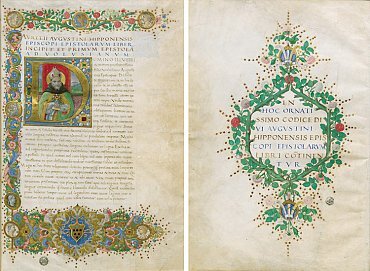Matthias Corvinus, King of Hungary, and Florence on display at the Museum of San Marco

2013 is the year of Italian culture in Hungary and Florence celebrates this relationship between the two countries with an exhibition at the Museum of San Marco, centered on the figure of Matthias Corvinus, King of Hungary from 1459 to 1490.
There will be time until 6th January to explore and discover the relationships that bound the Hungarian king and the Humanism in Florence, its culture and art.
The parallel with Lorenzo the Magnificent becomes rightly inevitable, he was perhaps the greatest promoter of the Florentine Humanism, definitely the greatest and undisputed patron of the arts. Both, in their respective cities, stood out in the intellectual circles, united not only on diplomatic relations, but rather by a common passion for culture, knowledge and art.
The exhibition is the result of joint work of Hungarian and Florentine scholars. Its headquarters, the Museum of San Marco, was chosen for the important role played by the library of the Dominican convent - the place where the exhibition is held - for the development of the humanities. The monumental environment in which the exhibition is on display was built in 1444 by Cosimo de 'Medici and was practically the first library of the Renaissance, a meeting point for figures such as Pico della Mirandola and Agnolo Poliziano.
The aim of the exhibition is to illustrate the spread of the Florentine culture in Hungary and show how this was used to outline a celebratory representation of the King of Hungary who wanted to raise global awareness in Europe on himself as the main defender of Christianity against the Ottoman peril.
The exhibition starts then outlining the cultural environment and the education of Matthias Corvinus through works of Florentine artists belonged to the Hungarian king, works of Hungarian artists who experienced the influence of the Florentines and the king's contacts with Florence, occurred mostly through his emissaries and advisers.
Under Matthias Corvinus the Hungarian court underwent a true "Renaissance" renewal from the cultural and artistic point of view but also from a more practical and concrete perspective. The architecture and decoration of the Palace of Buda and the Visegrád residence were in fact profoundly influenced by the Florentine Renaissance, as evidenced by sculptural remains found in recent excavations.
The most obvious manifestation of the fascination exerted by the Florentine art is the drape of Matthias Corvinus' throne that came from directly the workshop of Antonio del Pollaiuolo, which sums up all that was in vogue in the Florence of those years.
In this way, it is underlined that in the second half of the fifteenth century Florence was capable of bringing in prestigious venues, just as the Hungarian court, its image, its culture and its excellences, all of which Lorenzo de 'Medici undoubtedly contributed to support and spread. In addition to that of Lorenzo, however, also the influence of Beatrice of Aragon, who married Matthias in 1476, contributed to the appreciation of Renaissance art at the court of Buda.
On display there are works of various types from museums and libraries in Europe and overseas: painting, sculpture, ceramics, miniatures, to demonstrate how the Hungarian humanism has its roots in Italy. A cultural heritage which had not been lost but rather has remained until today at the basis of Hungarian culture.











